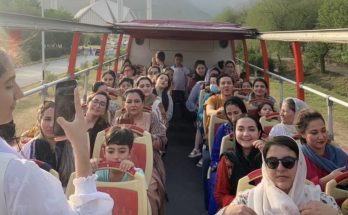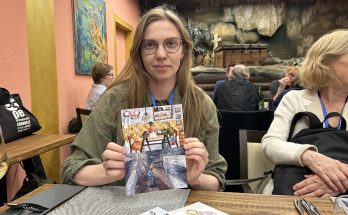By Luis Horacio Nájera
In the summer of 1995, while working as a crime reporter for El Diario, Ciudad Juárez’s most influential newspaper, my duties as a journalist clashed with my responsibility as the resident of a city besieged by a serial killer who was targeting young women.
My dilemma began in early July, when the newsroom receptionist asked me to meet a woman who was searching for her daughter. Silvia Elena Rivera had not returned home since leaving for high school three days earlier. As a social service, El Diario kept a small space within the crime section for the public to post notices free-of-charge about missing people, like those found on milk cartons. Because of its proximity to the US-Mexico border, close to a hub of transnational organized crime, most of those notices were about migrants trying to cross into the United States, or men presumed to have been abducted and murdered in drug-related crimes. I took down her information and the following day we published a photo of the smiling teenager with long black hair, and a plea to our readers to come forward with information.
Nearly a month later, on August 14, at the local office of the Chihuahua state police I recognized a local politician whom I’d met while covering a recent municipal election. I thought his presence there might be a partisan issue, so I went over to speak with him. In fact, he was there as the leader of the youth branch of the party, accompanying Irma Perez, the mother of Olga Alicia Carrillo Perez, a 20-year-old activist who had gone missing after attending a meeting at the party’s local headquarters four nights earlier. I filed a full article on her disappearance in the newspaper’s crime section.
In the early years of my professional career, law enforcement and journalists had a complex relationship, somehow more tolerant than now. Although corruption and impunity permeated the police in Ciudad Juárez, they granted reporters greater access, more information, and generally accorded them more respect, at least from most of the rank-and-file policemen. This offered us opportunities to observe and collect information directly, and brought us closer to crime scenes than perhaps we should have been. Because of their lack of training and the authorities’ convenient relaxation of the rules, we often took advantage of this access. But as I became familiar with the policemen, I realized some of these “benefits” were motivated by a sinister agenda: some officers were deliberately leaking sensitive information about the cases they were investigating. If publicity from the leaks were to scare away further witnesses and stall the case, the press could be blamed. Frequently, the motivation for doing this was corruption, sometimes it was fear of what further investigation might reveal, sometimes it was due to pure negligence. That was the status quo, and up to now it had benefited both parties, all things considered.
On August 19, five days after I met Irma Perez at the police station, the radio scanner monitoring police activity alerted us to the discovery of a female corpse on the outskirts of the Ciudad Juárez. It was the second found, in just over a month, within a vast desert area that was under development, a place known as El Lote Bravo. Previously, on July 16, close to the same crime scene, police had found the corpse of another woman. That corpse was later identified as 16-year-old Erica Garcia Moreno. Forensics confirmed that both victims had suffered sexual abuse and died from strangulation.
It sounds awful, but it wasn’t — and still isn’t — unusual to report on the discovery of dead bodies in the suburbs of Ciudad Juárez. Before those two female victims, El Lote Bravo was already infamous. Twelve corpses had been unearthed in the previous two years — including a 12-year-old girl, a DEA informant, and an alleged lieutenant of the local criminal group. So, two new corpses did not attract excessive attention, especially since the media was fixated on an ongoing turf war between street gangs, and the low-intensity violence among local drug dealers. In Juárez, the crime news cycle runs fast; but it drains you slowly, and eventually, it clouds your judgment and erodes your trust.
On August 22, after the police found another two female corpses outside the city. A dark blanket of fear spread over the community. The bodies had been discarded in a mountainous area known as Cerro Bola, five kilometres west of El Lote Bravo. And although the new bodies were significantly more decomposed, forensics confirmed that they had likely died from strangulation with a one-to two-month gap in between their times of death. This suggested that someone had carefully planned the disposal of the bodies, even though there was still no information to connect these killings with the ones in El Lote Bravo. However, as the corpses of more young women continued to be found in the suburbs, public trust in law enforcement plummeted. Local journalists faced increasing pressure from the community to demand accountability from the authorities and justice for the victims.
Ten days after the Cerro Bola discovery, I returned to El Lote Bravo as part of a caravan of forensics, police officers and reporters. We took a long silent walk in the radiant morning sun and came upon a terrified man who was waving at us from some bushes. Another horror awaited us there: the body of a partly clothed woman, already decomposed by the heat. The discovery raised suspicions of a serial killer, or killers, even further. Twenty-four hours later, the woman I had met in the newspaper reception identified the body as Silvia Elena Rivera, her daughter. She was wearing the same clothes from the day she had gone missing.
For all of us, residents of a city in collective shock, we finally had a face, a name, and a story to follow: she was a clue that might help us to understand who had committed such heinous crimes, and why. The next day, while still processing the identification of Silvia Elena, we rushed again to El Lote Bravo, near to where her body had been found. Close by, municipal workers had discovered yet another female corpse, the fifth within the same area, bearing marks of similar abuse and mutilation as the previous corpses.
Ciudad Juárez’s long nightmare continued. Early in September two more victims were found in less than a day. As before, forensics found evidence of abuse, mutilations and manual strangulation. The second body — the seventh so far — had similar clothes and bore a physical resemblance to the political activist Olga Alicia Carrillo, the daughter of Irma Perez, the woman I had met at the police station in mid-August. The next morning, Irma’s desperate voice asked me over the phone to visit her house. She wanted to share what she described as critical information about some of the victims.
As a journalist, it is always hard to meet with people who have just suffered a tragedy. There is a fine line between trust and abuse, one that journalists have to identify and never, ever cross while engaging with, or writing about their suffering. I learned about this when I studied journalism at university, but nothing can prepare you for an interview with the grieving mother of a serial killer’s alleged victim, nor for the moral weight of the trust that can be placed on you as a reporter.
Minutes after I got to Irma’s small house, a neighbour came over and spoke about Olga. Several weeks before her disappearance, she had seen Olga inside a popular discotheque in downtown Juárez. The neighbour was surprised because she had always known her to be a quiet person, even an introvert. She said Olga seemed ashamed of being found in the disco, telling the neighbour she had only come inside to use the washroom. Suddenly, another girl had approached and seized Olga’s arm; loudly scolding her, she pulled Olga towards the exit and they left.
When the neighbour had finished talking, Irma quickly handed her a photo of a smiling teenager with long black hair. The neighbour confirmed that the girl in the photo was the same one who had almost dragged Olga out of the disco: Silvia Elena Rivera, another one of the serial killer’s victims. Irma insisted that she had never heard her daughter mention a friend named Silvia or Elena. Calling to mind the information I had collected about both victims, I remembered that they seemed to have nothing in common, they didn’t frequent the same places, nor share friends or even interests. Shocked, I asked whether Irma or the neighbour had told the police about the night at the disco, a possible connection. Irma said no. She had called me only because she trusted the journalist who had broken the story of her missing daughter.
As I returned to the newsroom, I considered my dilemma: I could publish a scoop — a connection between Olga and Silvia Elena that was still unknown to the police — and write a story that would burnish my nascent career and increase my standing among the journalists covering this dark chapter of Ciudad Juárez’s history; or I could withhold the information, forgo publication, and entrust the authorities with an eyewitness statement that might help them find the killer or killers.
The right choice wasn’t obvious. Given the corruption and inefficiency of local law enforcement, I knew that not going public might contribute, indirectly, to the impunity with which the killer had acted against these seven women and their families. But, if I chose instead to publish the alleged link before the police knew about it, they could also use my work as a justification to stall the investigation, and blame me and the newspaper for their failure to solve the case.
Whenever I recall this dilemma, I ask myself how a journalist facing similar circumstances in a developed country like Canada would respond. How different would the choice seem in a country where there is respect for the rule of law, and the police are efficient, a country in which journalists can do their job without fear?
 Luis Horacio Nájera is an award-winning journalist and crime analyst. Nájera built his reputation writing in Ciudad Juárez for the Mexico-based Grupo Reforma and has lived in exile in Canada since 2008. He is the author, with Peter Edwards, of The Wolfpack: The Millennial Mobsters Who Brought Chaos and The Cartels to the Canadian Underworld (2021). A member of Massey College, Nájera was previously a fellow at the Citizen Lab/Canada Centre for Global Security Studies and the PEN Canada-George Brown Writer in Residence. He also was the recipient of the 2022 PEN Canada-Humber College Writers-in-Exile Scholarship, and the 2010 CJFE International Press Freedom Award. He holds master’s degrees in Global Affairs and Disaster and Emergency Management from the University of Toronto and York University respectively. He is co-author of The Uncaged Voice: Stories by Writers in Exile (2023).
Luis Horacio Nájera is an award-winning journalist and crime analyst. Nájera built his reputation writing in Ciudad Juárez for the Mexico-based Grupo Reforma and has lived in exile in Canada since 2008. He is the author, with Peter Edwards, of The Wolfpack: The Millennial Mobsters Who Brought Chaos and The Cartels to the Canadian Underworld (2021). A member of Massey College, Nájera was previously a fellow at the Citizen Lab/Canada Centre for Global Security Studies and the PEN Canada-George Brown Writer in Residence. He also was the recipient of the 2022 PEN Canada-Humber College Writers-in-Exile Scholarship, and the 2010 CJFE International Press Freedom Award. He holds master’s degrees in Global Affairs and Disaster and Emergency Management from the University of Toronto and York University respectively. He is co-author of The Uncaged Voice: Stories by Writers in Exile (2023).




